Caryn’s Thoughts
 I can’t think of my niece Jessi Hadlock Sawdon without thinking about the how sweet she is. There is, however, a mix of personality traits that are simply Jessi in every way. While being sweet and thoughtful is truly her nature, Jessi can also be very funny and a good natured teaser too. I suppose that was a matter of survival in her family. They all love to tease each other, and no one is exempt. I suppose that there are families who would find it odd to tease your siblings…or at least not very nice, but then they just don’t understand Jessi and her family. I think if they weren’t teasing each other, we would wonder what they were mad about.
I can’t think of my niece Jessi Hadlock Sawdon without thinking about the how sweet she is. There is, however, a mix of personality traits that are simply Jessi in every way. While being sweet and thoughtful is truly her nature, Jessi can also be very funny and a good natured teaser too. I suppose that was a matter of survival in her family. They all love to tease each other, and no one is exempt. I suppose that there are families who would find it odd to tease your siblings…or at least not very nice, but then they just don’t understand Jessi and her family. I think if they weren’t teasing each other, we would wonder what they were mad about.
It has been a long time since Jessi’s sisters have called her Jessi, because she has been nicknamed Jeffrey…don’t ask me why, because I couldn’t tell you, and it’s not the only nickname either. Maybe the girls will enlighten us on this, and the other nicknames in the family. For instance, my niece, Lindsay is called Lancil, and in answer to Kellie calling her Jeffrey, Jessi called  Kellie, Baby Pie. And these are just a couple of the names that have been used. I know, you all thought that name calling wasn’t nice, but these girls happen to disagree. Maybe the names they use don’t seem like they are cutesy pie names, but they are used in the most loving way there is, and those girls all know that. When people see their form of teasing on Facebook, you just have to wonder if they think these girls must be really mad at each other, but that couldn’t be further from the truth. Theirs is a close loving family, and the girls, along with their brother Ryan and his wife Chelsea, Jessi’s husband Jason, and Lindsay’s husband, Shannon, are the best of friends. It doesn’t matter how far apart they are, they are always best friends, and their teasing just keeps everything light hearted and fun.
Kellie, Baby Pie. And these are just a couple of the names that have been used. I know, you all thought that name calling wasn’t nice, but these girls happen to disagree. Maybe the names they use don’t seem like they are cutesy pie names, but they are used in the most loving way there is, and those girls all know that. When people see their form of teasing on Facebook, you just have to wonder if they think these girls must be really mad at each other, but that couldn’t be further from the truth. Theirs is a close loving family, and the girls, along with their brother Ryan and his wife Chelsea, Jessi’s husband Jason, and Lindsay’s husband, Shannon, are the best of friends. It doesn’t matter how far apart they are, they are always best friends, and their teasing just keeps everything light hearted and fun.
Jessi is a very capable legal secretary, and has been working in law offices since her high school days. She is an amazing organizer, and that makes her one of the most called upon people to help with things like deep cleaning for grandparents, and setting up the Christmas tree along with her cousin, Liz Masterson, which they  did this year, even though their grandparents, my parents, Al and Collene Spencer will be spending this Christmas in Heaven. Helping out this year was for her Aunt Cheryl Masterson, who has always been close to Jessi, and in fact, was instrumental in helping Jessi get her start in law. Jessi’s organizational skills also came in handy when she worked with the Young Professionals, as well as in her heading up of the youth group at our church.
did this year, even though their grandparents, my parents, Al and Collene Spencer will be spending this Christmas in Heaven. Helping out this year was for her Aunt Cheryl Masterson, who has always been close to Jessi, and in fact, was instrumental in helping Jessi get her start in law. Jessi’s organizational skills also came in handy when she worked with the Young Professionals, as well as in her heading up of the youth group at our church.
These days, Jessi is occupied with going to college, and enjoying married life with Jason and their dog, Daisy. They love to travel, and especially enjoy going to Miami, Florida to visit Lindsay and Shannon, as well as going to Michigan to visit Jason’s family. Yes, life is good for Jessi and Jason, and it will only bet better, because they are perfect for each other…and it doesn’t get any better than that. Today is Jessi’s birthday. Happy birthday Jessi!! Have a great day!! We love you!!
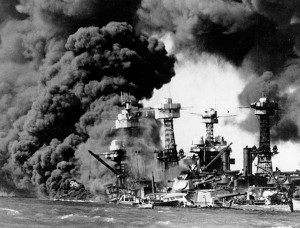
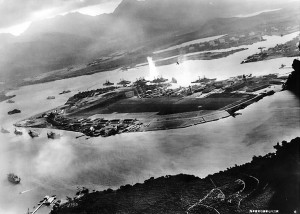 Located in the middle of Pearl Harbor is an island 335 acres in size. In Hawaii’s early days, it was known as Mokuumeume, meaning Island of Strife. It amazes me just how close that name is to the reality that is the island that is now known as Ford Island. I don’t think that strife is a constant companion of the island, but on this day, December 7, 1941…the date that will live in infamy, Ford Island was at center stage as one of the worst attacks in history took place on American soil. The participants, from the American side anyway, would have most certainly have chosen not to be there…if they had been given a choice. The island had changed hands several times, before finally ending up as a part of the military installation that was Pearl Harbor.
Located in the middle of Pearl Harbor is an island 335 acres in size. In Hawaii’s early days, it was known as Mokuumeume, meaning Island of Strife. It amazes me just how close that name is to the reality that is the island that is now known as Ford Island. I don’t think that strife is a constant companion of the island, but on this day, December 7, 1941…the date that will live in infamy, Ford Island was at center stage as one of the worst attacks in history took place on American soil. The participants, from the American side anyway, would have most certainly have chosen not to be there…if they had been given a choice. The island had changed hands several times, before finally ending up as a part of the military installation that was Pearl Harbor.
Every year, as Pearl Harbor Remembrance Day comes around, I try to write a story about that dreadful day, and this year, while looking at Pearl Harbor on Google Earth, my thoughts turned to that little island that was at the center of the attack. How must those men have felt? Everything happened so fast. There wasn’t even time to get the planes in the air. While the ships were being bombed around them, the pilots, mechanics, and airfield crew could only stand around watching…and dodging bullets. Of course, for most of them, that was impossible. The death toll that horrific day was 2403. In addition, there were 1178 people wounded. The emotional toll was beyond the imagination. This was the event that finally brought the United States into World War II.
I began to wonder what the people who were there were thinking as the events of the attack unfolded. There was no way to get off the island. If they had tried, they would surely have been killed. There were bombs going off on all sides of the island. Ships were sinking, airplanes were destroyed, and buildings were on fire or blown up. It was as if the world was coming to an end…or in reality, it was like waking up and finding yourself literally in Hell. My mind struggled to imagine how they must have felt…wishing and praying that all this was a dream and that they could be somewhere else…anywhere else. Still, they knew that it was real, and they were there, and 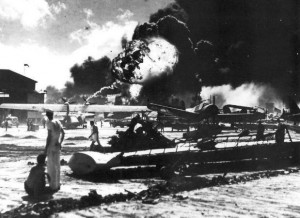
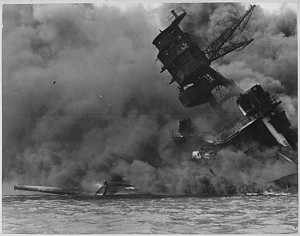 nothing would ever be the same again. They knew that the world as they had known it, had vanished…never to exist again. Of course, our country would come back from this attack, because we are a resilient people, but we would never be the same. We were less trusting of our enemies, something I see again in this day and age of terrorism, and something I think is important.
nothing would ever be the same again. They knew that the world as they had known it, had vanished…never to exist again. Of course, our country would come back from this attack, because we are a resilient people, but we would never be the same. We were less trusting of our enemies, something I see again in this day and age of terrorism, and something I think is important.
Being too trusting of our enemies in December of 1941, was exactly what paved the way for a surprise attack on December 7, 1941, and being too trusting today could do the same thing. It is imperative that we protect our people at all costs…even if it makes us seem heartless now. As in the case of the attack on Pearl Harbor, second chances at protecting our people don’t usually come. By the time we realize that we have made a mistake, it is too late, because it has become a fatal mistake. The men and women who survived the attack on Pearl Harbor knew first hand that our enemies hate us and want nothing less that death for America. That, I believe is the valuable lesson the people who survived that horrific attack took away that fateful day, and one we all need to seriously consider today.
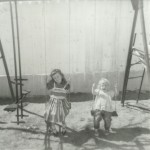 When I think back to my childhood, I always remember the carefree times. Summers spent with nothing but time on our hands, meant swimming at the Kelly Walsh pool, sunning in the back yard, and sack lunches eaten at the park, simply because it was something different to do. Of course, back then, you could easily send your kids to the park by themselves, and they could be gone for hours, and still you did not worry. That fact worked in our favor, because we were allowed to go so many places and do so many things on our own because the world was much safer than it is today.
When I think back to my childhood, I always remember the carefree times. Summers spent with nothing but time on our hands, meant swimming at the Kelly Walsh pool, sunning in the back yard, and sack lunches eaten at the park, simply because it was something different to do. Of course, back then, you could easily send your kids to the park by themselves, and they could be gone for hours, and still you did not worry. That fact worked in our favor, because we were allowed to go so many places and do so many things on our own because the world was much safer than it is today.
I remember the hours we spent at the school…the very place we couldn’t wait to get away from while school was still in session. Of course, we weren’t there for the  classroom, but rather for the playground. Just a couple of months earlier, we couldn’t wait for summer to come, because we were determined not to go anywhere near that school…oh well, the best laid plans…right? Nevertheless, just as soon as you got to those swings that were so very different from the ones at home, you knew that coming to the school in the summertime was a totally different thing, and very much acceptable. It didn’t even matter if you had to bring your little sister along, and going to the park was totally ok even if your parents had to come along. Somehow, even having that parental supervision couldn’t dampen your spirits.
classroom, but rather for the playground. Just a couple of months earlier, we couldn’t wait for summer to come, because we were determined not to go anywhere near that school…oh well, the best laid plans…right? Nevertheless, just as soon as you got to those swings that were so very different from the ones at home, you knew that coming to the school in the summertime was a totally different thing, and very much acceptable. It didn’t even matter if you had to bring your little sister along, and going to the park was totally ok even if your parents had to come along. Somehow, even having that parental supervision couldn’t dampen your spirits.
I’m not sure why these thoughts of summer vacation came to my mind today, other than perhaps the upcoming Christmas vacation, which is definitely a close second when it comes to the carefree days of vacation from school. I loved school, but there was just something about that break from school that always felt so 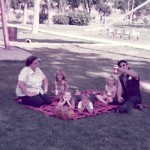 amazing. I just think every kid needs a break from school, even if they love it. There will always be time for kids to work every day for the rest of their lives, but summer vacation and Christmas break…well those are just pretty much for the kids, and of course their teachers, who I consider very blessed, by the way. I think most of us would love to have their summer vacations off. Nevertheless, that said, today found me thinking about the upcoming Christmas vacation that the kids will have, including two of my grandsons. It will be a welcome break from their studies, even if they do have to work at their jobs. To the kids, I say, enjoy those days while you can, because all too soon, the day will come when you too have a job and those long vacations are a thing of the past.
amazing. I just think every kid needs a break from school, even if they love it. There will always be time for kids to work every day for the rest of their lives, but summer vacation and Christmas break…well those are just pretty much for the kids, and of course their teachers, who I consider very blessed, by the way. I think most of us would love to have their summer vacations off. Nevertheless, that said, today found me thinking about the upcoming Christmas vacation that the kids will have, including two of my grandsons. It will be a welcome break from their studies, even if they do have to work at their jobs. To the kids, I say, enjoy those days while you can, because all too soon, the day will come when you too have a job and those long vacations are a thing of the past.
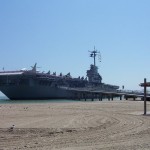 While Bob and I were in Corpus Christi, Texas in March of 2006, we had the opportunity to visit the USS Lexington, better known now, as The Blue Ghost. The ship was originally known as the Cabot, but after the USS Lexington CV-2 was lost in the Battle of the Coral Sea, she was renamed while under construction to commemorate the earlier USS Lexington. This Lexington was the fifth United States Navy ship to bear the name in honor of the Revolutionary War Battle of Lexington. In June of 1942, after the earlier USS Lexington was destroyed, workers at the shipyard submitted a request to Navy Secretary Frank Knox to change the name of a carrier currently under construction there to Lexington. Knox agreed to the proposal and Cabot was renamed as the fifth USS Lexington on 16 June 1942. She was launched on 23 September 1942, sponsored by Mrs Theodore Douglas Robinson. Lexington was commissioned on February 17, 1943.
While Bob and I were in Corpus Christi, Texas in March of 2006, we had the opportunity to visit the USS Lexington, better known now, as The Blue Ghost. The ship was originally known as the Cabot, but after the USS Lexington CV-2 was lost in the Battle of the Coral Sea, she was renamed while under construction to commemorate the earlier USS Lexington. This Lexington was the fifth United States Navy ship to bear the name in honor of the Revolutionary War Battle of Lexington. In June of 1942, after the earlier USS Lexington was destroyed, workers at the shipyard submitted a request to Navy Secretary Frank Knox to change the name of a carrier currently under construction there to Lexington. Knox agreed to the proposal and Cabot was renamed as the fifth USS Lexington on 16 June 1942. She was launched on 23 September 1942, sponsored by Mrs Theodore Douglas Robinson. Lexington was commissioned on February 17, 1943.
I can’t say for sure if this Frank Knox was any relation to my husband’s Knox ancestors, but it wouldn’t  surprise me at all, since the Knox family was into politics, and even included a connection to President James Knox Polk. While I was originally writing this because on this day, December 5, 1941, the prior USS Lexington headed out to the Battle of Midway…a battle that it never made it to, because of the Japanese attack on Pearl Harbor. That Lexington made it back to Pearl Harbor on December 13, 1941, so it was not much help. Later, the prior USS Lexington was destroyed in the Battle of Coral Sea, triggering the renaming of the USS Lexington that Bob and I saw.
surprise me at all, since the Knox family was into politics, and even included a connection to President James Knox Polk. While I was originally writing this because on this day, December 5, 1941, the prior USS Lexington headed out to the Battle of Midway…a battle that it never made it to, because of the Japanese attack on Pearl Harbor. That Lexington made it back to Pearl Harbor on December 13, 1941, so it was not much help. Later, the prior USS Lexington was destroyed in the Battle of Coral Sea, triggering the renaming of the USS Lexington that Bob and I saw.
The USS Lexington we saw was referred to as a “ghost” ship by the Japanese for her tendency to reappear after reportedly being sunk. This, coupled with the ship’s dark blue camouflage scheme, led the crew to refer to her as “The Blue Ghost”. There were rumors during the war that the ship was so badly damaged it had to be scuttled at one point, but a newly built aircraft carrier was immediately deployed with the same name, in an effort to demoralize the Japanese. I’m sure the whole situation was a serious frustration to the Japanese, but for Bob and me the legend that ship had 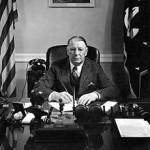 become was something we found quite interesting.
become was something we found quite interesting.
That said, I now find something new to draw my interest…namely Navy Secretary Frank Knox. One thing I have noticed is that in many families, certain names seem to be used over and over. In Bob’s family, there is a Frank Knox, and in that lineage there are Williams and Johns. The same is the case with Navy Secretary Frank Knox’s lineage. For that reason, I expect that a connection exists, and with a little work, I think I will find it, if it exists. I like the challenges that come from trying to connect the missing links in our family, and when I can tie it to something I have personally seen, it is an even more exciting quest.
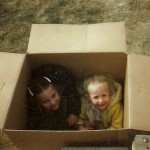 Over the years, my girls, Corrie Petersen and Amy Royce have made use of boxes for lots of things. In fact, like most kids, they have used boxes in every way imaginable. They have taken the gifts out of the box and set the gift aside, before playing in and with the box. Boxes have been their forts, playhouse, hiding place, storage for their treasures, and many other uses. It is an age old tradition that kids have played in and with boxes for as long as there have been boxes big enough for kids to get into.
Over the years, my girls, Corrie Petersen and Amy Royce have made use of boxes for lots of things. In fact, like most kids, they have used boxes in every way imaginable. They have taken the gifts out of the box and set the gift aside, before playing in and with the box. Boxes have been their forts, playhouse, hiding place, storage for their treasures, and many other uses. It is an age old tradition that kids have played in and with boxes for as long as there have been boxes big enough for kids to get into.
My daughter, Amy went so far as to try sitting in a shoe box that had been used to wrap a Christmas gift. She was too big for the box to say the least, but that didn’t phase her a bit. That box usage was the funniest one I can think of. Amy was always a teeny little girl, but she was still too big for that little shoe box. Nevertheless, watching Amy try to get into that 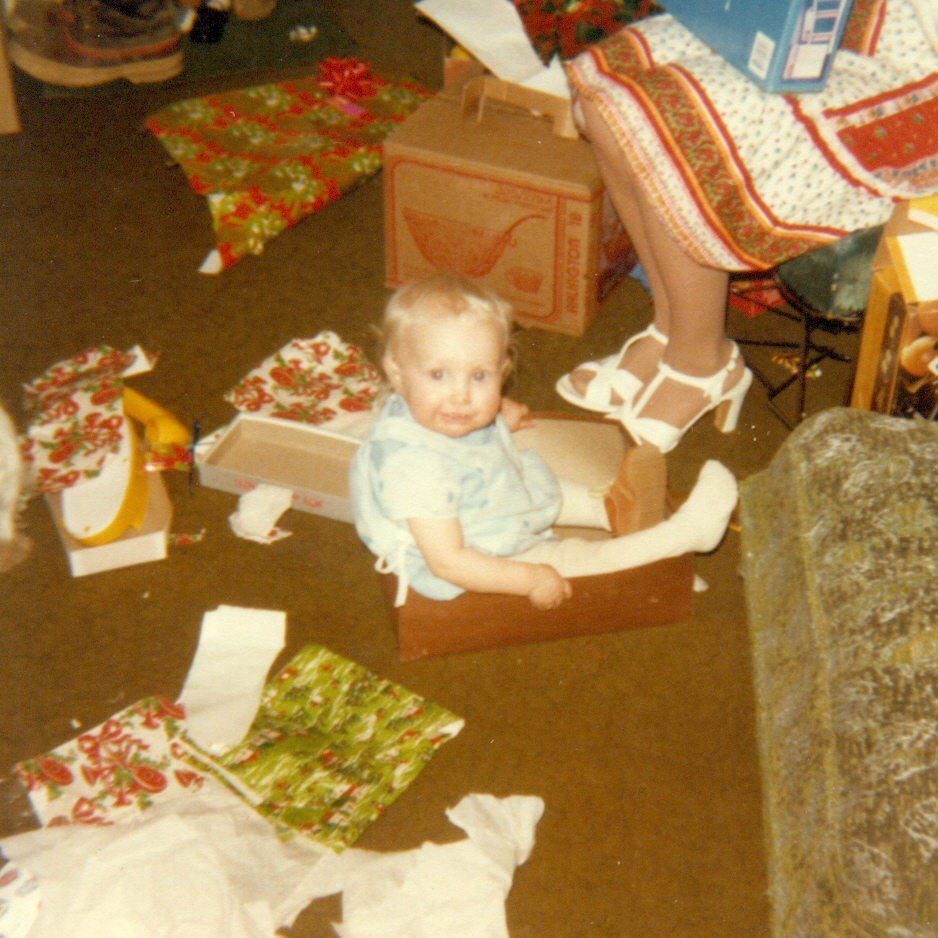 box, knowing that it was too small, was very funny. She was so determined to get into it, and it never occurred to her that she was too big.
box, knowing that it was too small, was very funny. She was so determined to get into it, and it never occurred to her that she was too big.
With all the uses kids have found for boxes, I am amazed that I can still be surprised by the use someone has come up with for a cardboard box. One of the greatest ideas I have ever seen is the coloring box. Now I don’t mean a box to keep your coloring supplies in. I mean that you put the kid in the box and Turk then loose with the crayons. They can’t color on the walls, because they are inside a box. It gives meaning to coloring inside the lines. We try to get our kids to color carefully so they work with them and work with them, but really until that kid is ready to color inside the lines.
The cool idea about coloring inside a box is that it doesn’t make a mess. The mess stays in the box, where it  doesn’t mess up the paint on your walls, or the carpet on your floors. The other cool thing is that the kids have a great time, because coloring inside a box, and coloring the inside of a box are something totally different to do. It’s almost like coloring on the walls, except that they don’t get into trouble for it. It almost seems like a crazy thing to do, and after all, aren’t kids all about doing things that are crazy. As for the parents…well, they are heroes, because they found something for the kids to do that almost seemed like it was something that was not allowed. I mean, you wouldn’t let your kids write on the walls, but the walls of a box, is allowed. It makes the kids feel like they got away with something…well, maybe not, but it’s fun anyway.
doesn’t mess up the paint on your walls, or the carpet on your floors. The other cool thing is that the kids have a great time, because coloring inside a box, and coloring the inside of a box are something totally different to do. It’s almost like coloring on the walls, except that they don’t get into trouble for it. It almost seems like a crazy thing to do, and after all, aren’t kids all about doing things that are crazy. As for the parents…well, they are heroes, because they found something for the kids to do that almost seemed like it was something that was not allowed. I mean, you wouldn’t let your kids write on the walls, but the walls of a box, is allowed. It makes the kids feel like they got away with something…well, maybe not, but it’s fun anyway.
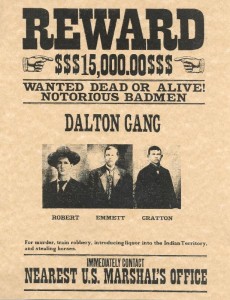
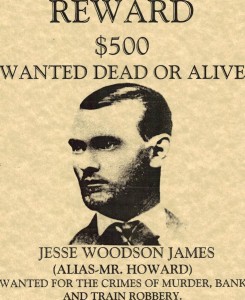 As the railroad spread across this land, and payrolls began coming in by way of the railroad, a new breed of criminal showed up on the scene…the train robbers. At first, the train robbers got away with it, because no one had really given much thought to the possibility of such a thing happening. Gangs like Jesse James…who was best known as a bank robber, but was also one of the early train robbers, Butch Cassidy and the Wild Bunch, the Dalton Gang, and the Reno Gang terrorized the railways, stealing the payrolls of crews working on building the railroads and towns in the west.
As the railroad spread across this land, and payrolls began coming in by way of the railroad, a new breed of criminal showed up on the scene…the train robbers. At first, the train robbers got away with it, because no one had really given much thought to the possibility of such a thing happening. Gangs like Jesse James…who was best known as a bank robber, but was also one of the early train robbers, Butch Cassidy and the Wild Bunch, the Dalton Gang, and the Reno Gang terrorized the railways, stealing the payrolls of crews working on building the railroads and towns in the west.
With the advent of train robberies came a need for a solution. Enter the train police. At first the railroads would arrange for a posse to go after the robbers, but eventually they realized that the posse was too little too late. They had to take affirmative action. So they put the police on the train with the money. I’m sure that more violence came from that action, but the robbers probably didn’t get away with it as often as they had been.
I think that in many ways, we have almost romanticized the train robbers, but in reality, they were like any other criminal. They would kill for the money they were after. The police were under as much pressure as the police these days. You can’t face a gun as a regular part of your job and not have some degree of fear for your life. These men were the law, and they were pretty much on their own. They couldn’t call in the state police, or the police from the next town over. Those were too far away…especially with the distances the trains traveled. The railroad police were the only thing standing between the robbers and the money.
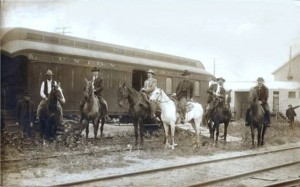
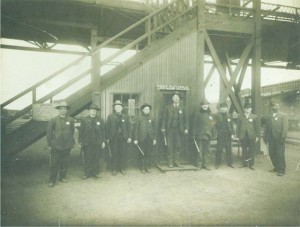 Theirs was an important job too. Every time the train was robbed, peoples lives were affected. Without the payroll money, the workers couldn’t support their families, and that caused more problems. The workers were angry and then desperate. I don’t think police work would be for me, but I have to wonder if police work was harder back in the old west, or now, with the terrorism and gang issues…or if police work is police work, no matter what era it is.
Theirs was an important job too. Every time the train was robbed, peoples lives were affected. Without the payroll money, the workers couldn’t support their families, and that caused more problems. The workers were angry and then desperate. I don’t think police work would be for me, but I have to wonder if police work was harder back in the old west, or now, with the terrorism and gang issues…or if police work is police work, no matter what era it is.
 Since my dad was stationed in England during World War II, and because many of my ancestors come from England, I am interested in all things English. Of course, that doesn’t mean that I know everything about England, and I think it would be pretty difficult to do that with any country, including the country I live in…the United States. That said, I learned something about England today. England is an island nation as most people know, and that can make travel to mainland Europe difficult and expensive. Travel to Hawaii would be a good example of that, and Hawaii isn’t even it’s own nation. Nevertheless, most of us have to save up our money to make the trip to Hawaii.
Since my dad was stationed in England during World War II, and because many of my ancestors come from England, I am interested in all things English. Of course, that doesn’t mean that I know everything about England, and I think it would be pretty difficult to do that with any country, including the country I live in…the United States. That said, I learned something about England today. England is an island nation as most people know, and that can make travel to mainland Europe difficult and expensive. Travel to Hawaii would be a good example of that, and Hawaii isn’t even it’s own nation. Nevertheless, most of us have to save up our money to make the trip to Hawaii.
So, what does that have to do with England, you might ask. Well…everything. While an alternate mode of transportation to get to Hawaii…other than ship or plane, is not feasible for Hawaii…for England, maybe it could be. As early as the days of Napoleon Bonaparte, in 1802, people were looking for a way to connect England to France. Nothing came of those early suggestions, because the necessary technology was not available until the 20th century. The proposal was that since England and France were no longer at war, they should permanently connect their countries by way of a tunnel. The Channel Tunnel, later dubbed the Chunnel runs from Folkestone, England to Calais, France. The tunnel is 31 miles across, but in total there are 95 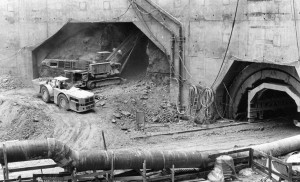 miles of tunnels. There are two railway tunnels, and a service tunnel. The work began on in 1986, and took four years to connect the two sides. Approximately 13,000 workers dug the 95 miles of tunnels at an average depth of 150 feet below sea level. Eight million cubic meters of soil were removed, at a rate of about 2,400 tons per hour. When it was finished, the Chunnel would have three interconnected tubes, including one rail track in each direction and one service tunnel. It cost $15 billion to complete.
miles of tunnels. There are two railway tunnels, and a service tunnel. The work began on in 1986, and took four years to connect the two sides. Approximately 13,000 workers dug the 95 miles of tunnels at an average depth of 150 feet below sea level. Eight million cubic meters of soil were removed, at a rate of about 2,400 tons per hour. When it was finished, the Chunnel would have three interconnected tubes, including one rail track in each direction and one service tunnel. It cost $15 billion to complete.
Most of us don’t give much thought to tunnels, but when it comes to underwater tunnels…well, that is just different. Of course, we all know of the Holland Tunnel that connects New York and New Jersey, but that tunnel isn’t nearly as long as the Chunnel. The Holland Tunnel is a little over a mile and a half, which pales by comparison to the Chunnel’s 31 miles. On December 1, 1990, after four long years of work, the two sides of the Chunnel were connected. Workers exchanged French and British flags and toasted each other with champagne. It was a great day. The Channel Tunnel finally opened for passenger service on May 6, 1994, with Britain’s Queen Elizabeth II and France’s President Francois Mitterrand on hand in Calais for the inaugural run. A company called Eurotunnel won the 55 year contract to operate the Chunnel, which is the crucial stretch of the  Eurostar high speed rail link between London and Paris. The regular shuttle train through the tunnel runs 31 miles in total, with 23 of those underwater and it takes 20 minutes, with an additional 15 minute loop to turn the train around. The Chunnel is the second-longest rail tunnel in the world, after the Seikan Tunnel in Japan.
Eurostar high speed rail link between London and Paris. The regular shuttle train through the tunnel runs 31 miles in total, with 23 of those underwater and it takes 20 minutes, with an additional 15 minute loop to turn the train around. The Chunnel is the second-longest rail tunnel in the world, after the Seikan Tunnel in Japan.
Things like this fascinate me. I like the idea of something as unique as the Chunnel. I like the interesting fact that it is in England. And I like the fact that, the Chunnel is the longest underwater section, longest international tunnel, second-longest railway tunnel in the world. Some day, I hope to ride the train through that tunnel. Wouldn’t that be amazing?
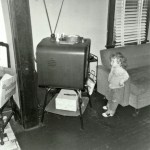 We’ve all been told not to stand so close to the television set, but somehow all that nagging by our parents never really had much effect on most kids, who still stood right in front of the television as often as they sat a distance away from it. I don’t think it was really an act of defiance, but rather that the child was absorbed in the show, and didn’t even realize that they were standing right in front of the television set.
We’ve all been told not to stand so close to the television set, but somehow all that nagging by our parents never really had much effect on most kids, who still stood right in front of the television as often as they sat a distance away from it. I don’t think it was really an act of defiance, but rather that the child was absorbed in the show, and didn’t even realize that they were standing right in front of the television set.
Of course, our parents were worried about a myth that getting too close to the television set could damage their child’s eyes, but science has proven that to be just that…a myth. In reality, they say that the reason that children tend to stand close to the television is that they can actually focus better on objects that are closer. Of course, scientists also say that when children stand so closely, it can also be a sign of future nearsightedness. That said, I guess that in reality, it does no harm for a child to stand right in front of the television…other than the fact that it irritates everyone else who is trying to watch the same show. I don’t suppose that this revelation will stop parents from telling their children not to stand so close to the television set, and that is up to them, but the reality is that it will not hurt your children.
Whether it is hard on your children’s eyes to stand so 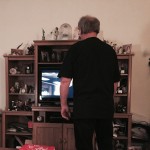 close to the television or not, will probably always be up for debate, but don’t think that kids are the only ones who do it, because they aren’t. I’ve seen plenty of adults who stand in front of the television set, including my husband, Bob and me too. It’s not that you mean to do it, but rather that you walk by and something catches your eye. You are interested, so you look, and the next thing you know someone is telling you to get out of the way. Oops!! Not only did you get caught by another adult, standing in front of the television set, but it was probably one of the same people who heard you tell your kids not to stand in front of the television set. I know that for me, that brings back memories of those days now in the past when I nagged my kids in exactly the same way.
close to the television or not, will probably always be up for debate, but don’t think that kids are the only ones who do it, because they aren’t. I’ve seen plenty of adults who stand in front of the television set, including my husband, Bob and me too. It’s not that you mean to do it, but rather that you walk by and something catches your eye. You are interested, so you look, and the next thing you know someone is telling you to get out of the way. Oops!! Not only did you get caught by another adult, standing in front of the television set, but it was probably one of the same people who heard you tell your kids not to stand in front of the television set. I know that for me, that brings back memories of those days now in the past when I nagged my kids in exactly the same way.

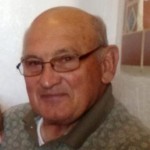 During this journey to find my ancestors and my living family, there have been several times that I have felt that I had made a rare find. Of course, how could it be rare if there were several times, you might be thinking. I thought the same thing, and yet, some of the people I have come across have become so special to me that they could only be classified as a rare find. People like my father-in-law’s half brother, Butch Schulenberg, and our cousins Paul and Betty Noyes, come to mind immediately. But then, I also think of Tracey Inglimo, Denny Fredrick, Tim and Shawn Fredrick, Shirley Cameron, Pam and Mike Wendling, Bill and Maureen Spencer, and the many Schumacher cousins in
During this journey to find my ancestors and my living family, there have been several times that I have felt that I had made a rare find. Of course, how could it be rare if there were several times, you might be thinking. I thought the same thing, and yet, some of the people I have come across have become so special to me that they could only be classified as a rare find. People like my father-in-law’s half brother, Butch Schulenberg, and our cousins Paul and Betty Noyes, come to mind immediately. But then, I also think of Tracey Inglimo, Denny Fredrick, Tim and Shawn Fredrick, Shirley Cameron, Pam and Mike Wendling, Bill and Maureen Spencer, and the many Schumacher cousins in 
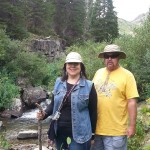 Wisconsin and Minnesota. I think of Nick and Laura Weber, and Joe Weber. As I think of these people, new rare finds and renewed rare finds, I begin to realize that as I have discovered these special people, some I have never met in person, and some that I have known all my life, but lost track of, I begin to realize that maybe rare finds in the family line aren’t really as rare as I thought they were after all.
Wisconsin and Minnesota. I think of Nick and Laura Weber, and Joe Weber. As I think of these people, new rare finds and renewed rare finds, I begin to realize that as I have discovered these special people, some I have never met in person, and some that I have known all my life, but lost track of, I begin to realize that maybe rare finds in the family line aren’t really as rare as I thought they were after all.
I have been thinking about what it is that makes a person a rare find, and the thing that immediately comes to mind is that these people truly care about me…about what I think and who I am. I find that these people are kindred spirits…something I had not really given much thought to until I got into the “Anne of Green Gables” 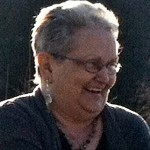
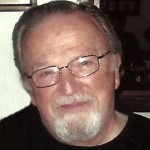 movies, but after watching those movies, I realize just how important kindred spirits really are. Kindred spirits share the same values, goals, and desires, even if they are is slightly different ways. I think it is the values though that mean the most. Maybe that is a big part of what makes these people a rare find. So much has changed in our world these days, and while we all have maybe a slightly different view of what things are wrong and how to fix them, I still find that these people are value driven people…patriots, who love this country and what it stands for.
movies, but after watching those movies, I realize just how important kindred spirits really are. Kindred spirits share the same values, goals, and desires, even if they are is slightly different ways. I think it is the values though that mean the most. Maybe that is a big part of what makes these people a rare find. So much has changed in our world these days, and while we all have maybe a slightly different view of what things are wrong and how to fix them, I still find that these people are value driven people…patriots, who love this country and what it stands for.
The longer I think about it, the more I realize that while finding people who compliment who I am is not such a rare find, it is still a 
 rare find that there are so many people who have become so very special to me. It warms my heart to think of these people, and it warms my heart with every conversation I have with them. It is my hope to someday meet those precious people who I have never had the pleasure of meeting in person. I know we will really hit it off, because we are family and kindred spirits. It’s a great combination. While my “rare finds” have not really been so rare after all, I am so blessed by each and every one of then, and that makes them absolutely priceless. I am very blessed to know them all.
rare find that there are so many people who have become so very special to me. It warms my heart to think of these people, and it warms my heart with every conversation I have with them. It is my hope to someday meet those precious people who I have never had the pleasure of meeting in person. I know we will really hit it off, because we are family and kindred spirits. It’s a great combination. While my “rare finds” have not really been so rare after all, I am so blessed by each and every one of then, and that makes them absolutely priceless. I am very blessed to know them all.
 My nieces, Machelle Cook Moore and her sister, Susan Cook Griffith have both always been very sweet, loving girls. They have tender loving hearts. Machelle is the older sister, and there are five years between the girls, but they are just as close as they can be. Both of the girls love to go camping and to be outdoors in general, which is nice for their families. The summers are filled with trips to the Big Horn Mountains in northern Wyoming, which is where they live.
My nieces, Machelle Cook Moore and her sister, Susan Cook Griffith have both always been very sweet, loving girls. They have tender loving hearts. Machelle is the older sister, and there are five years between the girls, but they are just as close as they can be. Both of the girls love to go camping and to be outdoors in general, which is nice for their families. The summers are filled with trips to the Big Horn Mountains in northern Wyoming, which is where they live.
It is there, however that many of the similarities between the girls end. Machelle and her husband, Steve have two sons, Weston and Easton, while Susan and her husband, Josh have a blended family with two daughters. I have found that when a woman has just sons, her life is much different than when a woman has just daughters. That is an observation that I have made from my own life, because I also have two daughters and no sons. Boys tend to change a woman…even if  she is a girly girl. There is simply a culture shock that comes from having a house full of men. Maybe it is the same for the fathers of just daughters, and in reality, I’m sure that is true, but since I am a woman, I can’t speak to the culture shock a man of only daughters really feels, other than outnumbered. But then again, I’m sure that the mother of just sons, feels the same way. I know my own daughter, Corrie Petersen feels outnumbered a lot. I’m sure that Machelle has the same issues, and the older the boys get, the more they like to tease their mothers. That is a guy thing for sure.
she is a girly girl. There is simply a culture shock that comes from having a house full of men. Maybe it is the same for the fathers of just daughters, and in reality, I’m sure that is true, but since I am a woman, I can’t speak to the culture shock a man of only daughters really feels, other than outnumbered. But then again, I’m sure that the mother of just sons, feels the same way. I know my own daughter, Corrie Petersen feels outnumbered a lot. I’m sure that Machelle has the same issues, and the older the boys get, the more they like to tease their mothers. That is a guy thing for sure.
Life with boys is rough and tumble, and in many ways a little bit gross. Because that is what boys do. It is filled with spiders, snakes, bats, and toads, or at least some kind of a mixture of these and more. The mother never really knows what she might find in the pockets of her little…angels. She can never be 100% sure that they won’t completely embarrass her with their noises, because to them that sort of thing is…well, funny. For most  girls, these kinds of things would be more embarrassing to the girl than to her parents…not so with boys. With boys, all bets are off, and their mom had better expect the unexpected…at all times. I know that those who have boys know exactly what I’m talking about.
girls, these kinds of things would be more embarrassing to the girl than to her parents…not so with boys. With boys, all bets are off, and their mom had better expect the unexpected…at all times. I know that those who have boys know exactly what I’m talking about.
Machelle and Susan are alike in many ways, but their lives are very different. I know that they wouldn’t trade their lives for anything, but I’m sure that they’ve had a few conversations about just how different their lives are too. I don’t think either of them could fully believe the differences unless they see it for themselves, however. Today is Machelle’s birthday. Happy birthday Machelle!! Have a great day!! We love you!!

